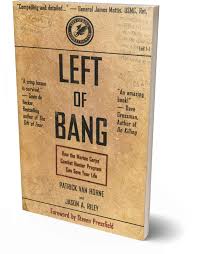Depending on where you are in the world and what types of risks you are concerned about encountering on a daily basis, the challenge of recognizing threats can appear to be daunting.
- Members of the military may be overseas and deployed into any country on short notice.
- Police officers can find themselves in an unfamiliar area of town.
- Executive protection professionals could be conducting an advance and doing surveillance detection in a country that they’ve never been to before.
- Corporate security professionals may be preparing employees to travel abroad into areas they are unfamiliar with.
How does a professional prepare for these types of situations? Because being an anomaly is a relative term – for someone to stand out and attract your attention, they have to stand out from something – the most capable protectors are the ones who have built an extensive database of experiences allowing them to quickly realize what is normal for the area they’re in and the people within it. Historically, developing this understanding hasn’t been done in a deliberate or repeatable way. It has been left to chance and is often done without any conscious attention.
The problem with that unstructured approach to building a database of knowledge is that it limits who becomes capable of recognizing threats. It becomes hard to pass those experiences and that intuitive understanding of “normal” on to others. The result of an unrepeatable process is often one of two things. One common result is that people are unsure of exactly what they have been told because it wasn’t done in a clear way, which causes them to doubt themselves the first time they are actually consciously assessing someone or an area. The other scenario is that in the absence of valid pre-event indicators, they rely on inaccurate biases and subjective definitions of what the baseline for an area is. Naturally, neither one of these outcomes is desirable.
Until today, the solution to this problem was only taught to elite military and law enforcement units through intensive training seminars. With the addition of the Tactical Analysis Advanced Course to The CP Journal’s online Academy, the process to deliberately establish a baseline by reading human behavior is now available to all of the professionals who serve our country in the military, police our streets and protect us from attacks. For the people who are expected to be capable of proactively preventing violence, the challenge of being able to clearly define the norm in an area, so that anomalies present themselves, is no longer a hurdle that can’t be overcome.
With over six hours of video lessons and real world examples, the Advanced Course expands on the behaviors taught in the Basic Program to provide our students with the ability to read three of the four pillars of observable behavior and the process to establish a baseline through sequential searches. Following the lessons designed to teach the process and the behaviors, the course shows students how to conduct a red team analysis on your baseline so that you can look at the area from your adversary’s perspective and find the vulnerabilities that they could exploit in their crimes and attacks. The class teaches you how to figure out what is going on in the areas being observed and how to anticipate what will make someone stand out from the crowd, so that you can be prepared to be proactive against anyone who requires investigation or action.
According to many of our clients, the biggest takeaway from the Advanced Course wasn’t just the ability to make the observations and assessments needed to get left of bang, but also the newfound capability to clearly articulate and explain what led them to recognize someone who warrants attention. The way that you can learn to do this is by learning:
- How to assess the collective mood of an area.
- How to read the environment.
- How to conduct a hasty and deliberate search.
- How to think like the adversary to find holes in the baseline that could be exploited.
In the Advanced Course you will learn how to do these things while using real life events and situations to elevate your situational awareness to a level of informed awareness. Knowing how to look for threats and knowing what cues will make the adversary stand out from the crowd is what separates the professionals who are information hunting from the amateurs who are information hoping. The baselining process taught in the Tactical Analysis Advanced Course helps professionals reduce the uncertainty that is inherent in military, police and security operations so that getting left of bang isn’t just a tagline, but the new reality.
When you’re ready to be empowered to take control of your personal safety and shorten the time required to be proficient in analyzing your environment, make the baselining process yours by taking The CP Journal’s Tactical Analysis Advanced Course.


